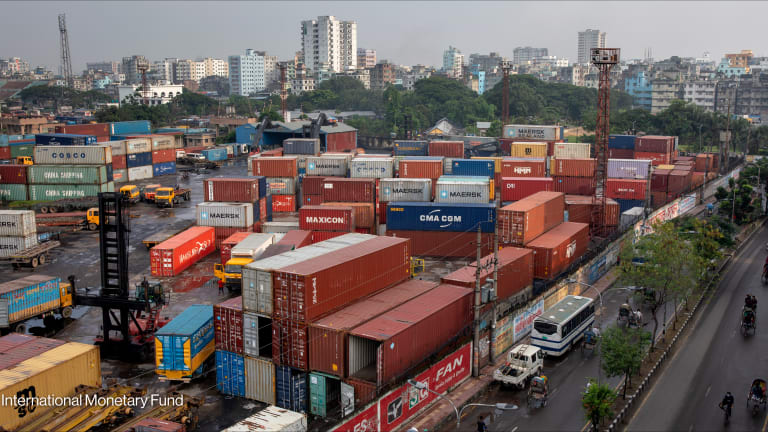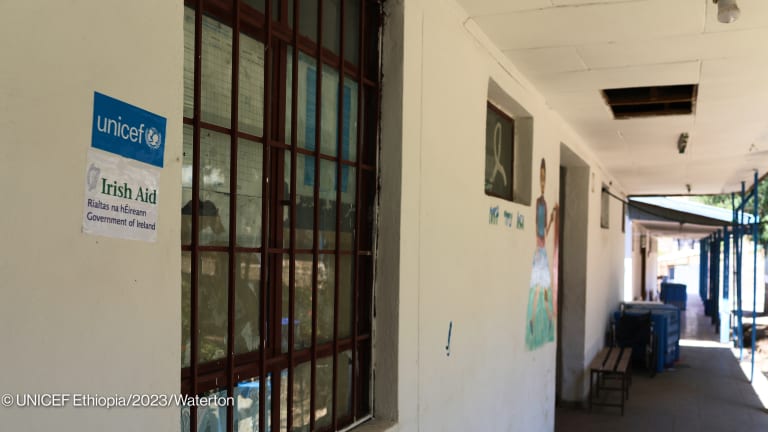How much do Asian donors spend on development?
The six donor countries spent nearly $21 billion to finance development and humanitarian projects across the world.
Over the last few decades, we have witnessed the historic economic rise of several aid-recipient countries in Asia. Their transformation from beneficiaries of development aid to donors offers an interesting case study not only for their neighboring countries but for development as a whole. In this article, we looked into the development aid spending of six donor countries: Japan and South Korea — both part of the Development Assistance Committee — Indonesia and Thailand — which are both in the preliminary stage toward membership to the Organisation for Economic Co-operation and Development, or OECD — and Kazakhstan and Taiwan. Overall, Japan, Kazakhstan, South Korea, Taiwan, and Thailand spent $20.8 billion in 2022, according to figures from OECD. This represents a 17% increase from their combined aid spending in 2021. The figures are dominated by spending from Japan, which contributed more than 80% of all spending. Excluding Japanese spending, the figures for other donors totaled $3.3 billion. Indonesia does not report to OECD, but its total official support for sustainable development, or TOSSD, in 2022 amounted to $9.3 million. This is 38.8% higher than the previous year. We used official sources, such as the data from OECD and other official government sources to map out the development spending of these six donors, including their priorities and future direction. All figures are in constant 2022 U.S. dollar prices, unless stated otherwise. This analysis is a shorter version of a full report that we will publish in the next few weeks. This article will be updated with further information when the full report is available. Japan Japan is one of the biggest contributors to international development and its aid continues to rise over time. Its official development assistance, or ODA, amounted to $12.1 billion in 2018, then rose to $17.5 billion in 2022. According to OECD’s preliminary data, Japanese aid increased further to $20.2 billion in 2023. Around 85%, worth $14.9 billion, of Japanese aid in 2022 was disbursed bilaterally, while the remaining $2.6 billion went through the multilateral system. India was the largest recipient of Japanese aid in 2022, receiving funding amounting to nearly $3 billion. Then Bangladesh with $2.3 billion, the Philippines with $1.1 billion, and Ukraine with $710.9 million. South Korea South Korea has transitioned from being a low-income country to an economic powerhouse. It joined the DAC in 2010, less than 15 years after joining the OECD. Except for the first year of the pandemic, South Korea’s ODA has been gradually increasing in the five-year period spanning 2018 to 2022. From $2.1 billion in 2018, its ODA rose to $2.8 billion in 2022. We saw the same trend with its ODA in relation to its gross national income, or GNI — from 0.14% in 2018 to 0.17% in 2022. On average, 76.3% of South Korea’s ODA between 2018 and 2022 was disbursed bilaterally. The largest portion of South Korea’s ODA, worth $134.9 million, went to Ethiopia. Cambodia ranked next with $125.3 million, followed by the Philippines with $121.3 million, and Bangladesh with $85.4 million. Indonesia Indonesia is not a reporting member of the OECD. However, it is one of the OECD’s five key partners and is the only member of the Group of 20 major economies from the Southeast Asia region. Its development spending is measured through its TOSSD. The country reported $9.3 million in TOSSD contributions in 2022, which is an increase of 38.8% from 2021, when its contribution was $6.7 million. These were channeled primarily through the global south-south cooperation. Among countries, Pakistan was its priority in 2022, receiving $500,000. Then the Philippines with $300,000, Ukraine with $200,000, and Libya with $200,000. Kazakhstan Kazakhstan’s ODA fluctuated between 2018 and 2022, seeing dips and rises throughout the period. Its largest spending was in 2018 and 2021, both at $42 million. The latest data shows that the country spent $37 million on development in 2022. Afghanistan was its top recipient in 2022 with $4.2 million, followed by Ukraine with $2.3 million, Pakistan with $400,000, and then Kyrgyzstan with $380,000. More than half of its ODA in 2022, worth $25.3 million, went to activities benefitting multiple recipient countries from different regions. Taiwan Similar to Kazakhstan, Taiwan’s aid spending between 2018 and 2022 experienced some fluctuations. From $310 million in 2018, aid rose to $418 million in 2020. Then it went down to $311 million in 2021 and up to $384 million the following year. Around 64.6% of its aid in the time period was disbursed bilaterally, peaking at 88.4% in 2018. Although the country reports to OECD, it does not provide a breakdown of its geographic priorities. By sector, the largest portion of aid went to tourism, with $67.3 million. Another $44.9 million went to agriculture, forestry, and fishing; $33.2 million to COVID-19 prevention and control; and $24 million to crisis management. The figures are in 2022 constant prices, as reported by Taiwan’s Ministry of Foreign Affairs. Thailand Over the last 40 years, Thailand has enjoyed continued economic growth that enabled it to move from being a low-income country to an upper-middle-income country. Based on OECD data, Thailand’s ODA was increasing before the COVID-19 pandemic. From $135 million in 2018, its aid rose slightly to $145 million in 2019. It went down to $65 million in 2020 and remained within that range for the next two years. The donor disbursed the majority of its aid bilaterally, averaging 67.4% in the five-year period spanning 2018-2022. The highest rate was in 2022, at 87.9%. Laos was Thailand’s priority recipient in 2022, receiving $46.4 million — more than twice the aid Laos received from Thailand in 2018. Myanmar ranked next with $6.8 million, then Cambodia with $3.8 million, and Bhutan with nearly $1 million. Try out Devex Pro Funding today with a free five-day trial, and explore funding opportunities from over 850 sources in addition to our analysis and news content.
Over the last few decades, we have witnessed the historic economic rise of several aid-recipient countries in Asia. Their transformation from beneficiaries of development aid to donors offers an interesting case study not only for their neighboring countries but for development as a whole.
In this article, we looked into the development aid spending of six donor countries: Japan and South Korea — both part of the Development Assistance Committee — Indonesia and Thailand — which are both in the preliminary stage toward membership to the Organisation for Economic Co-operation and Development, or OECD — and Kazakhstan and Taiwan.
Overall, Japan, Kazakhstan, South Korea, Taiwan, and Thailand spent $20.8 billion in 2022, according to figures from OECD. This represents a 17% increase from their combined aid spending in 2021.
This story is forDevex Promembers
Unlock this story now with a 15-day free trial of Devex Pro.
With a Devex Pro subscription you'll get access to deeper analysis and exclusive insights from our reporters and analysts.
Start my free trialRequest a group subscription Printing articles to share with others is a breach of our terms and conditions and copyright policy. Please use the sharing options on the left side of the article. Devex Pro members may share up to 10 articles per month using the Pro share tool ( ).
Miguel Tamonan is a Senior Development Analyst at Devex, where he analyzes data from public and private donors to produce content and special reports for Pro and Pro Funding readers. He has a bachelor’s degree in Political Science with a Major in International Relations from the Polytechnic University of the Philippines.
Alecsondra Si is a Junior Development Analyst at Devex. She analyzes funding data from bilateral and multilateral agencies, foundations, and other public and private donors to produce content for Devex Pro and Pro Funding readers. She has a bachelor’s degree in International Studies - major in European Studies from De La Salle University, Manila, Philippines.









